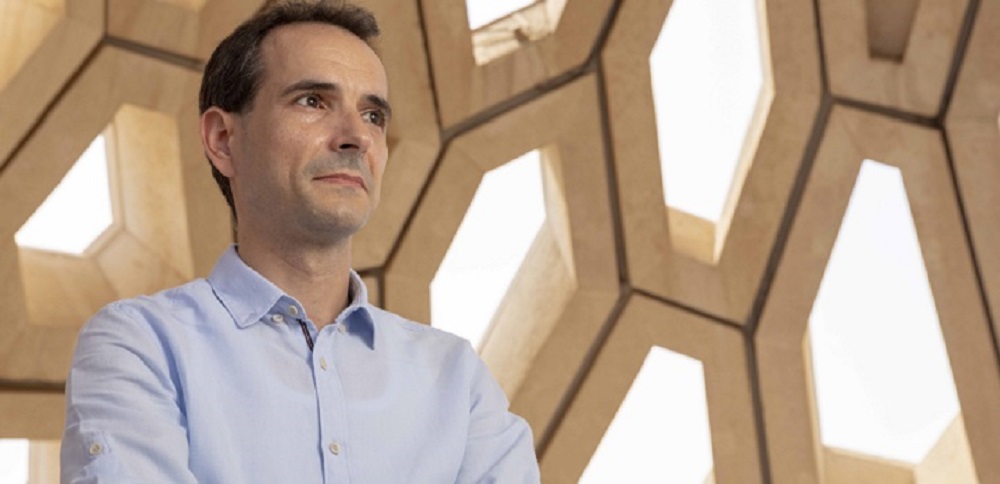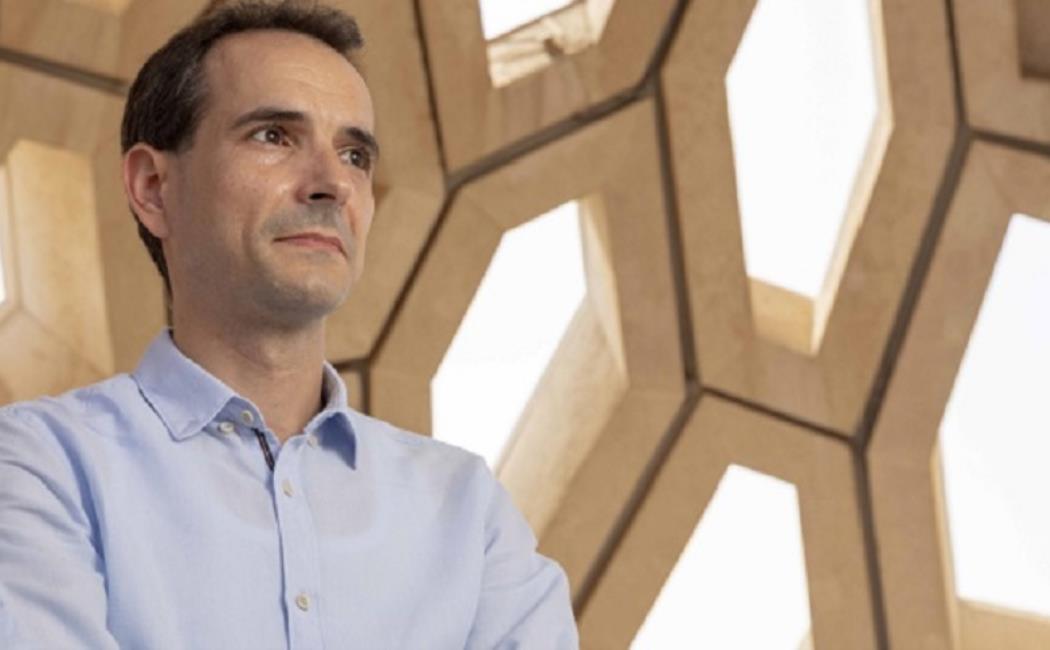

Rethinking industry-scale catalytic processes could slash global energy consumption and even turn carbon dioxide into a valuable commodity.
Chemical catalysts don’t spring to mind as revolutionary materials, yet Jorge Gascon, director of the KAUST Catalysis Center, says catalysts have sparked some of the biggest revolutions in human history. Take the Haber Bosch process, for example. This first practical method for industrial synthetic fertilizer production, developed in the early 1900s, triggered the agricultural revolution that fuels farming today.
Catalysis research is poised to change the world again, Gascon claims. “We are about to have another revolution in the way we use our resources and in the way we produce and store energy, and I believe catalysis will play a huge role,” he says. “We at KAUST are in an excellent position to contribute strongly to that transition.”
Gascon’s research—and that of the Center he has led since joining KAUST in October 2017—revolves around sustainability. “The main purpose of my group is to develop and deploy sustainable technologies for the production of chemicals, energy carriers and new environmental applications. Process intensification, feedstock efficiency and reduction of energy usage are our main objectives.”
For example, the team recently gained insights that could significantly enhance the performance of catalysts that convert methanol into major chemical feedstocks called olefins1,2. These high-demand chemicals are traditionally sourced from oil, but new catalysts—which Gascon’s work is helping to make more efficient—enable olefin production from coal and natural gas, alleviating a bottleneck in olefin supply.
Another major area of focus in Gascon’s lab, as well as others labs in the Center, is to develop catalysts that can efficiently turn carbon dioxide into a valuable chemical feedstock. The team has developed several catalysts that can combine CO2 with hydrogen, converting the troublesome greenhouse gas into a range of useful small hydrocarbon molecules.
At the moment, the hydrogen for the process comes from natural gas in such a way that it generates CO2. “If the situation changes and we start to use solar energy to produce hydrogen from water, then that hydrogen can be used to make very useful products out of carbon dioxide,” Gascon says. Should governments introduce a tax on carbon dioxide emissions, recycling CO2 would become even more favorable. “Our main target is to make those technologies as efficient as possible so it becomes attractive to valorize carbon dioxide.”
The catalysts Gascon works with are typically porous crystalline solids, such as zeolites and metal-organic frameworks. “I like these materials because working with crystalline structures gives you much more control over design,” Gascon says. The structures of these materials can be tuned at the nanoscale. By making such changes and noting the effects on catalytic performance, it is possible to gain deep insights into how the catalysts function and thus they can be improved. “Being able to explain a thing you can measure at the macroscale, by the structures that you build at the nanoscale, is super nice,” Gascon says.
The great strength of the Catalysis Center is that there are researchers focused on every aspect of catalytic reaction development and implementation, Gascon adds. “We design new active sites at the nanoscale, but we also design how the catalyst particles should look, and now we are starting to design how reactors should look,” Gascon says. “We are starting to have a holistic approach. I think the Catalysis Center is probably unique in that we are able to cover almost every relevant aspect in catalysis.”
One of the Center’s flagship projects, which began its second phase in early 2018, is the one-step conversion of crude oil to chemicals. The project illustrates the power of the holistic approach. Today, refineries pass crude oil through cleaning steps, then separate the oil into various chemical fractions, before those fractions are catalytically processed to form chemical feedstocks and fuels. “We want to avoid all those initial steps and go directly to the processing part,” says Gascon. Cutting these steps could save a lot of energy.
To directly make chemicals from crude oil, you need catalysts that are very robust and resistant to poisoning by contaminants in the oil. But for the process to be successful, the team needs to go far beyond the catalyst itself. “You need to think of different reactor concepts to the ones that are used at the moment,” Gascon says. “You need to redesign the whole process. This is the type of research where I believe our Center can make a difference.”
The project is a revolutionary idea in the best tradition of catalysis research. And the unique funding structure, facilities and expertise at KAUST make the Catalysis Center the place to do it, says Gascon. “From a research point of view, this is like Disneyland,” he says. “The possibilities here are absolutely amazing. This is probably the only place in the world where you are your own limit.”
Selected Publications
- Recent trends and fundamental insights in the methanol-to-hydrocarbons process
I. Yarulina, A. Dutta Chowdhury, F. Meirer, B. M. Weckhuysen, J. Gascon
Nature Catalysis, volume 1, pp. 398-411, (2018) - Structure–performance descriptors and the role of Lewis acidity in the methanol-to-propylene process
I. Yarulina, K. De Wispelaere, S. Bailleul, J. Goetze, M. Radersma, E. Abou-Hamad, I. Voll...
Nature Chemistry, (2018)


